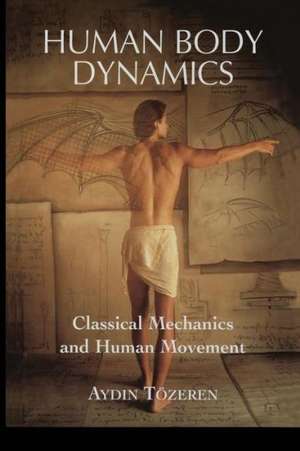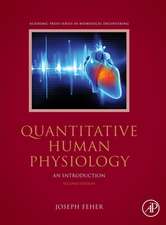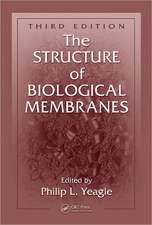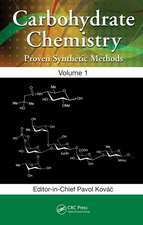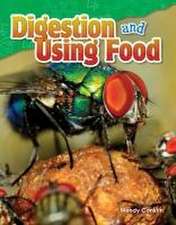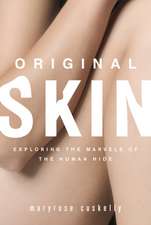Human Body Dynamics: Classical Mechanics and Human Movement
Autor Aydin Tözerenen Limba Engleză Paperback – 17 mar 2013
| Toate formatele și edițiile | Preț | Express |
|---|---|---|
| Paperback (1) | 655.92 lei 6-8 săpt. | |
| Springer – 17 mar 2013 | 655.92 lei 6-8 săpt. | |
| Hardback (1) | 946.61 lei 6-8 săpt. | |
| Springer – 29 dec 1999 | 946.61 lei 6-8 săpt. |
Preț: 655.92 lei
Preț vechi: 690.45 lei
-5% Nou
Puncte Express: 984
Preț estimativ în valută:
125.55€ • 136.42$ • 105.53£
125.55€ • 136.42$ • 105.53£
Carte tipărită la comandă
Livrare economică 19 aprilie-03 mai
Preluare comenzi: 021 569.72.76
Specificații
ISBN-13: 9781475773903
ISBN-10: 1475773900
Pagini: 340
Ilustrații: XVIII, 316 p.
Dimensiuni: 152 x 229 x 18 mm
Greutate: 0.5 kg
Ediția:Softcover reprint of the original 1st ed. 2000
Editura: Springer
Colecția Springer
Locul publicării:New York, NY, United States
ISBN-10: 1475773900
Pagini: 340
Ilustrații: XVIII, 316 p.
Dimensiuni: 152 x 229 x 18 mm
Greutate: 0.5 kg
Ediția:Softcover reprint of the original 1st ed. 2000
Editura: Springer
Colecția Springer
Locul publicării:New York, NY, United States
Public țintă
GraduateCuprins
Human Body Structure: Muscles, Tendons, Ligaments, and Bones.- Laws of Motion: Snowflakes, Airborne Balls, Pendulums.- Particles in Motion: Method of Lumped Masses and Jumping, Sit-Ups, Push-Ups.- Bodies in Planar Motion: Jumping, Diving, Push-Ups, Back Curls.- Statics: Tug-of-War, Weight Lifting, Trusses, Cables, Beams.- Internal Forces and the Human Body: Complexity of the Musculoskeletal System.- Impulse and Momentum: Impulsive Forces and Crash Mechanics.- Energy Transfers: In Pole Vaulting, Running, and Abdominal Workout.- Three-Dimensional Motion: Somersaults, Throwing, and Hitting Motions.
Recenzii
From the reviews:
"This book represents a very ambitious undertaking of providing, in a single volume, a comprehensive exposition of the kinematics and dynamics governing the motion of the human body as well as a complete course of general mechanics. The author has been remarkably successful in achieving both objectives. He has produced a very accessible text without sacrificing the accuracy of arguments and avoiding undue simplifications of the problems. The book should prove to be a great value to the practitioners in orthopedics, sports medicine and bioengineering research. University students interested in careers in medicine or bioengineering may find it an interesting alternative to the standard courses in mechanics." Maciej P. Bieniek, Renwick Professor Emeritus of Engineering Mechanics, Columbia University
"Human Body Dynamics is a remarkable book. A concise, comprehensive, well-written and well-illustrated first chapter gives a necessary introduction to the anatomy of the human body. In the following chapters human body dynamics is explored using the principles of classical mechanics. The concluding chapter deals with the methods of three-dimensional mechanics. With these powerful tools, a myriad of very interesting problems are solved. This, I would say is the dessert of the feast." H. Buelent Atabek, Professor Emeritus of Biomedical Engineering, Catholic University of America
"This book represents a very ambitious undertaking of providing, in a single volume, a comprehensive exposition of the kinematics and dynamics governing the motion of the human body as well as a complete course of general mechanics. The author has been remarkably successful in achieving both objectives. He has produced a very accessible text without sacrificing the accuracy of arguments and avoiding undue simplifications of the problems. The book should prove to be a great value to the practitioners in orthopedics, sports medicine and bioengineering research. University students interested in careers in medicine or bioengineering may find it an interesting alternative to the standard courses in mechanics." Maciej P. Bieniek, Renwick Professor Emeritus of Engineering Mechanics, Columbia University
"Human Body Dynamics is a remarkable book. A concise, comprehensive, well-written and well-illustrated first chapter gives a necessary introduction to the anatomy of the human body. In the following chapters human body dynamics is explored using the principles of classical mechanics. The concluding chapter deals with the methods of three-dimensional mechanics. With these powerful tools, a myriad of very interesting problems are solved. This, I would say is the dessert of the feast." H. Buelent Atabek, Professor Emeritus of Biomedical Engineering, Catholic University of America
Caracteristici
Request lecturer material: sn.pub/lecturer-material
